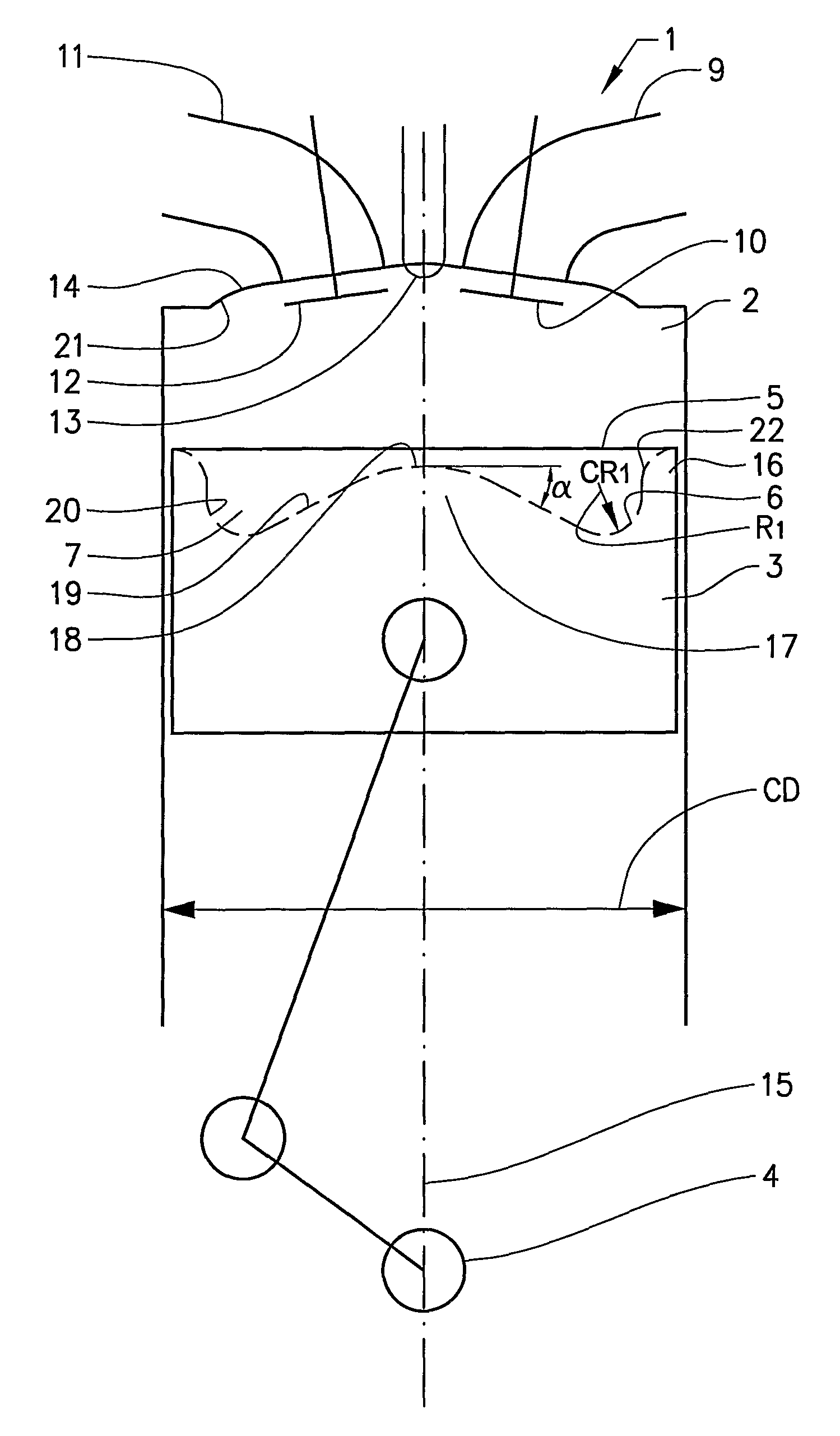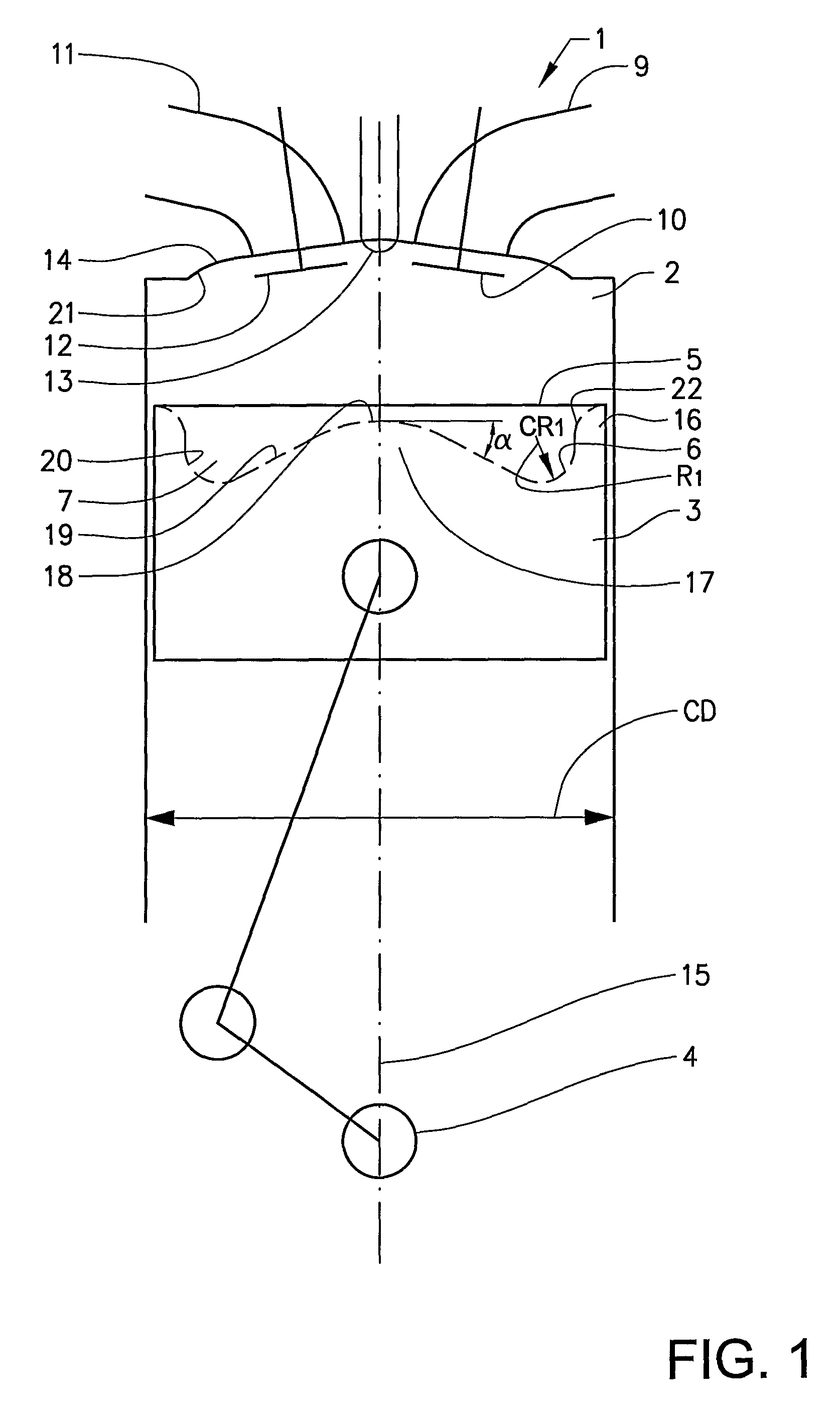Device for reducing soot emissions in a vehicle combustion engine
a combustion engine and soot reduction technology, which is applied in the direction of combustion engines, machines/engines, pistons, etc., can solve the problems of high soot formation, poor mixing at high temperature, and loss of a lot of momentum, and achieve the effect of reducing soot emissions
- Summary
- Abstract
- Description
- Claims
- Application Information
AI Technical Summary
Benefits of technology
Problems solved by technology
Method used
Image
Examples
Embodiment Construction
[0033]To understand the unique physical characteristics of combustion chamber 7 according to the invention, attention is initially directed to FIGS. 1 and 2a illustrating the various physical characteristics or parameters which are required to achieve the unexpected emission reduction advantages of the present invention.
[0034]In FIG. 1, a diagrammatic view is shown of a combustion engine 1 which is designed to work according to the diesel process. The engine 1 comprises a cylinder 2 and a piston 3, which reciprocates in the cylinder 2 and is connected to a crankshaft 4 so that the piston 3 is set to reverse in the cylinder 2 at an upper and lower dead centre position. As is also common, one end of the cylinder cavity is closed by a engine cylinder head 14. The piston 3 is provided in its upper surface 5 with a piston bowl 6, which forms a combustion chamber 7, together with inner surface 21 of a cylinder head 14 and walls of the cylinder 2. In the cylinder head 14 one or more induct...
PUM
 Login to View More
Login to View More Abstract
Description
Claims
Application Information
 Login to View More
Login to View More - R&D
- Intellectual Property
- Life Sciences
- Materials
- Tech Scout
- Unparalleled Data Quality
- Higher Quality Content
- 60% Fewer Hallucinations
Browse by: Latest US Patents, China's latest patents, Technical Efficacy Thesaurus, Application Domain, Technology Topic, Popular Technical Reports.
© 2025 PatSnap. All rights reserved.Legal|Privacy policy|Modern Slavery Act Transparency Statement|Sitemap|About US| Contact US: help@patsnap.com



